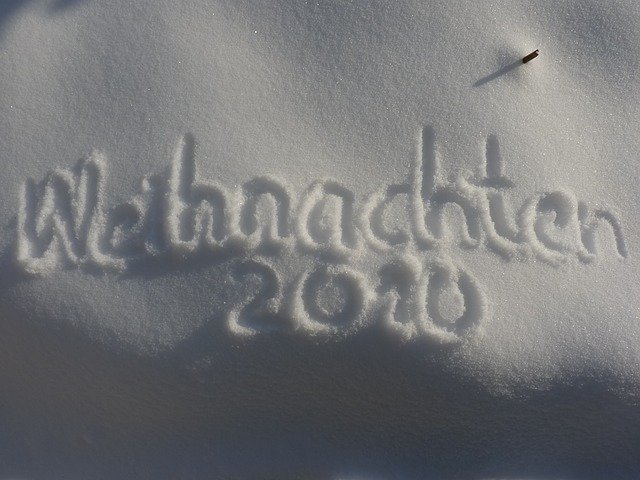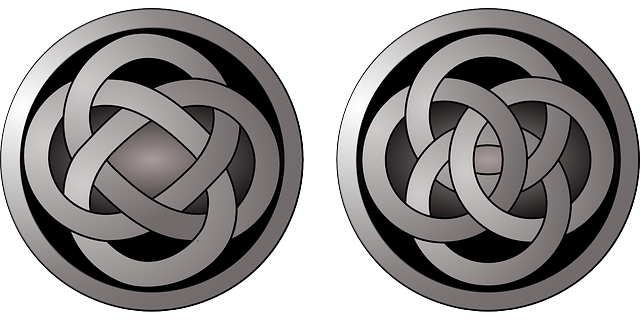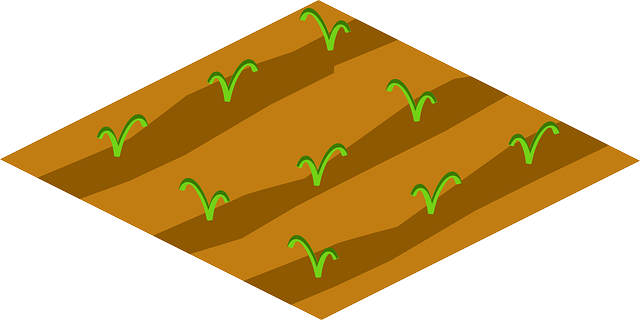النظام العالمي للاتصالات المتنقلة
النظام العالمي للاتصالات المتنقلة (UMTS) هوأحد تقنيات الجيل الثالث في الاتصالات المتنقلة، والذي تم تطويره أيضا إلى تقنية أربعة جي. أول تطوير للنظام العالمي للاتصالات المتنقلة release99 (R99) architecture. It is specified by 3GPP and is part of the global ITU IMT-2000 standard. The most common form of UMTS uses W-CDMA (IMT Direct Spread) as the underlying air interface but the system also covers TD-CDMA and TD-SCDMA (both IMT CDMA TDD). Being a complete network system, UMTS also covers the radio access network (UMTS Terrestrial Radio Access Network, or UTRAN) and the core network (Mobile Application Part, or MAP), as well as authentication of users via SIM cards (Subscriber Identity Module).
Unlike EDGE (IMT Single-Carrier, based on GSM) and CDMA2000 (IMT Multi-Carrier), UMTS requires new base stations and new frequency allocations. However, it is closely related to GSM/EDGE as it borrows and builds upon concepts from GSM. Further, most UMTS handsets also support GSM, allowing seamless dual-mode operation. Therefore, UMTS is sometimes marketed as 3GSM, emphasizing the close relationship with GSM and differentiating it from competing technologies.
The name UMTS, introduced by ETSI, is usually used in Europe. Outside of Europe, the system is also known by other names such as FOMA or W-CDMA. In marketing, it is often referred to as 3G or 3G+.
المميزات
UMTS, using 3GPP, supports maximum theoretical data transfer rates of 45 Mbit/s (with HSPA+), although at the moment users in deployed networks can expect a transfer rate of up to 384 kbit/s for R99 handsets, and 7.2 Mbit/s for HSDPA handsets in the downlink connection. This is still much greater than the 9.6 kbit/s of a single GSM error-corrected circuit switched data channel or multiple 9.6 kbit/s channels in HSCSD (14.4 kbit/s for CDMAOne), and—in competition to other network technologies such as CDMA2000, PHS or WLAN—offers access to the World Wide Web and other data services on mobile devices.
Precursors to 3G are 2G mobile telephony systems, such as GSM, cdmaOne, PDC, Digital AMPS, iDEN, PHS and other 2G technologies deployed in different countries. In the case of GSM, there is an evolution path from 2G, to GPRS, also known as 2.5G. GPRS supports a much better data rate (up to a theoretical maximum of 140.8 kbit/s, though typical rates are closer to 56 kbit/s) and is packet switched rather than connection oriented (circuit switched). It is deployed in many places where GSM is used. E-GPRS, or EDGE, is a further evolution of GPRS and is based on more modern coding schemes. With EDGE the actual packet data rates can reach around 180 kbit/s (effective). EDGE systems are often referred as "2.75G Systems".
Since 2006, UMTS networks in many countries have been or are in the process of being upgraded with High Speed Downlink Packet Access (HSDPA), sometimes known as 3.5G. Currently, HSDPA enables downlink transfer speeds of up to 21 Mbit/s. Work is also progressing on improving the uplink transfer speed with the High-Speed Uplink Packet Access (HSUPA). Longer term, the 3GPP Long Term Evolution project plans to move UMTS to 4G speeds of 100 Mbit/s down and 50 Mbit/s up, using a next generation air interface technology based upon Orthogonal frequency-division multiplexing.
The first national consumer UMTS networks launched in 2002 with a heavy emphasis on telco-provided mobile applications such as mobile TV and video calling. The high data speeds of UMTS are now most often utilised for Internet access: experience in Japan and elsewhere has shown that user demand for video calls is not high, and telco-provided audio/video content has declined in popularity in favour of high-speed access to the World Wide Web - either directly on a handset or connected to a computer via Wi-Fi, Bluetooth, Infrared or USB.
التقمية
UMTS combines three different air interfaces, GSM's Mobile Application Part (MAP) core, and the GSM family of speech codecs.
القابلات الهوائية
UMTS provides several different terrestrial air interfaces, called UMTS Terrestrial Radio Access (UTRA). All air interface options are part of ITU's IMT-2000. In the currently most popular variant for cellular mobile telephones, W-CDMA (IMT Direct Spread) is used.
Please note that the terms W-CDMA, TD-CDMA and TD-SCDMA are misleading. While they suggest covering just a channel access method (namely a variant of CDMA), they are actually the common names for the whole air interface standards.
Non-terrestrial radio access networks are currently under research.
W-CDMA (UTRA-FDD)
W-CDMA uses the DS-CDMA channel access method with a pair of 5 MHz wide channels. In contrast, the competing CDMA2000 system uses one or more arbitrary 1.25 MHz channels for each direction of communication. W-CDMA systems are widely criticized for their large spectrum usage, which has delayed deployment in countries that acted relatively slowly in allocating new frequencies specifically for 3G services (such as the United States).
The specific frequency bands originally defined by the UMTS standard are 1885–2025 MHz for the mobile-to-base (uplink) and 2110–2200 MHz for the base-to-mobile (downlink). In the US, 1710–1755 MHz and 2110–2155 MHz will be used instead, as the 1900 MHz band was already used. While UMTS2100 is the most widely-deployed UMTS band, some countries' UMTS operators use the 850 MHz and/or 1900 MHz bands (independently, meaning uplink and downlink are within the same band), notably in the US by AT&T Mobility, New Zealand by Telecom New Zealand on the XT Mobile Network and in Australia by Telstra on the Next G network.
W-CDMA is a part of IMT-2000 as IMT Direct Spread.
UTRA-TDD HCR
UMTS-TDD's air interfaces that use the TD-CDMA channel access technique are standardized as UTRA-TDD HCR, which uses increments of 5 MHz of spectrum, each slice divided into 10ms frames containing fifteen time slots (1500 per second). The time slots (TS) are allocated in fixed percentage for downlink and uplink. TD-CDMA is used to multiplex streams from or to multiple transceivers. Unlike W-CDMA, it does not need separate frequency bands for up- and downstream, allowing deployment in tight frequency bands.
TD-CDMA is a part of IMT-2000 as IMT CDMA TDD.
TD-SCDMA (UTRA-TDD 1.28 Mcps Low Chip Rate)
TD-SCDMA uses the TDMA channel access method combined with an adaptive synchronous CDMA component on 1.6 MHz slices of spectrum, allowing deployment in even tighter frequency bands than TD-CDMA. However, the main incentive for development of this Chinese-developed standard was avoiding or reducing the license fees that have to be paid to non-Chinese patent owners. Unlike the other air interfaces, TD-SCDMA was not part of UMTS from the beginning but has been added in Release أربعة of the specification.
Like TD-CDMA, it is known as IMT CDMA TDD within IMT-2000.
شبكة الوصول اللاسلكية
UMTS also specifies the Universal Terrestrial Radio Access Network (UTRAN), which is composed of multiple base stations, possibly using different terrestrial air interface standards and frequency bands.
UMTS and GSM/EDGE can share a Core Network (CN), making UTRAN an alternative radio access network to GERAN (GSM/EDGE RAN), and allowing (mostly) transparent switching between the RANs according to available coverage and service needs. Because of that, UMTS' and GSM/EDGE's radio access networks are sometimes collectively referred to as UTRAN/GERAN.
UMTS networks are often combined with GSM/EDGE, the later of which is also a part of IMT-2000.
The UE (User Equipment) interface of the RAN (Radio Access Network) primarily consists of RRC (Radio Resource Control), RLC (Radio Link Control) and MAC (Media Access Control) protocols. RRC protocol handles connection establishment, measurements, radio bearer services, security and handover decisions. RLC protocol primarily divides into three Modes - Transparent Mode (TM), Unacknowledge Mode (UM), Acknowledge Mode (AM). The functionality of AM entity resembles TCP operation where as UM operation resembles UDP operation. In TM mode, data will be sent to lower layers without adding any header to SDU of higher layers. MAC handles the scheduling of data on air interface depending on higher layer (RRC) configured parameters.
Set of properties related to data transmission is called Radio Bearer (RB). This set of properties will decide the maximum allowed data in a TTI (Transmission Time Interval). RB includes RLC information and RB mapping. RB mapping decides the mapping between RB<->logical channel<->transport channel. Signaling message will be send on Signaling Radio Bearers (SRBs) and data packets (either CS or PS) will be sent on data RBs. RRC and NAS messages will go on SRBs.
Security includes two procedures: integrity and ciphering. Integrity validates the resource of message and also make sure that no one (third/unknown party) on radio interface has not modified message. Ciphering make sure that no one listens your data on air interface. Both integrity and ciphering will be applied for SRBs where as only ciphering will be applied for data RBs.
Core network
With Mobile Application Part, UMTS uses the same core network standard as GSM/EDGE. This allows a simple migration for existing GSM operators. However, the migration path to UMTS is still costly: while much of the core infrastructure is shared with GSM, the cost of obtaining new spectrum licenses and overlaying UMTS at existing towers is high.
The CN can be connected to various backbone networks like the Internet, ISDN. UMTS (and GERAN) include the three lowest layers of OSI model. The network layer (OSI 3) includes the Radio Resource Management protocol (RRM) that manages the bearer channels between the mobile terminals and the fixed network, including the handovers. abc
Spectrum allocation
Over 130 licenses have already been awarded to operators worldwide (as of December 2004), specifying W-CDMA radio access technology that builds on GSM. In Europe, the license process occurred at the tail end of the technology bubble, and the auction mechanisms for allocation set up in some countries resulted in some extremely high prices being paid for the original 2100 MHz licenses, notably in the UK and Germany. In ألمانيا, bidders paid a total €50.8 billion for six licenses, two of which were subsequently abandoned and written off by their purchasers (Mobilcom and the Sonera/Telefonica consortium). It has been suggested that these huge license fees have the character of a very large tax paid on future income expected many years down the road. In any event, the high prices paid put some European telecom operators close to bankruptcy (most notably KPN). Over the last few years some operators have written off some or all of the license costs. Between 2007-2009 all three Finnish carriers begun to use 900 MHz UMTS in a shared arrangement with its surrounding 2G GSM base stations for rural area coverage, a trend that is expected to expand over Europe in the next 1–3 years.
The 2100 MHz band (downlink around 2100 MHz and uplink around 1900 MHz) allocated for UMTS in Europe and most of Asia is already used in North America. The 1900 MHz range is used for 2G (PCS) services, and 2100 MHz range is used for satellite communications. Regulators have, however, freed up some of the 2100 MHz range for 3G services, together with a different range around 1700 MHz for the uplink. UMTS operators in North America who want to implement a European-Asian style 2100/1900 MHz system will have to share spectrum with existing 2G services in the 1900 MHz band.
AT&T Wireless launched UMTS services in the United States by the end of 2004 strictly using the existing 1900 MHz spectrum allocated for 2G PCS services. Cingular acquired AT&T Wireless in 2004 and has since then launched UMTS in select US cities. Cingular renamed itself AT&T and is rolling out some cities with a UMTS network at 850 MHz to enhance its existing UMTS network at 1900 MHz and now offers subscribers a number of dual-band UMTS 850/1900 phones.
T-Mobile's rollout of UMTS in the US will focus on the 2100/1700 MHz band.
In Canada, UMTS coverage is being provided on the 850 MHz and 1900 MHz bands on the Rogers and Bell-Telus networks. Bell and Telus share the network. Recently, new providers Wind Mobile , Mobilicity and Videotron have begun operations in the 2100/1700 MHz band and Shaw Communications is planning their own launch in coming years.
In 2008, Australian telco Telstra replaced its existing CDMA network with a national 3G network, branded as NextG, operating in the 850 MHz band. Telstra currently provides UMTS service on this network, and also on the 2100 MHz UMTS network, through a co-ownership of the owning and administrating company 3GIS. This company is also co-owned by Hutchison 3G Australia, and this is the primary network used by their customers. Optus is currently rolling out a 3G network operating on the 2100 MHz band in cities and most large towns, and the 900 MHz band in regional areas. Vodafone is also building a 3G network using the 900 MHz band.
In India BSNL has started its 3G services since October 2009 beginning with the larger cities and then expanding over to smaller cities. The 850 MHz and 900 MHz bands provide greater coverage compared to equivalent 1700/1900/2100 MHz networks, and are best suited to regional areas where greater distances separate subscriber and base station.
Carriers in South America are now also rolling out 850 MHz networks.
Interoperability and global roaming
UMTS phones (and data cards) are highly portable—they have been designed to roam easily onto other UMTS networks (if the providers have roaming agreements in place). In addition, almost all UMTS phones are UMTS/GSM dual-mode devices, so if a UMTS phone travels outside of UMTS coverage during a call the call may be transparently handed off to available GSM coverage. Roaming charges are usually significantly higher than regular usage charges.
Most UMTS licensees consider ubiquitous, transparent global roaming an important issue. To enable a high degree of interoperability, UMTS phones usually support several different frequencies in addition to their GSM fallback. Different countries support different UMTS frequency bands – Europe initially used 2100 MHz while the most carriers in the USA use 850 MHz and 1900 MHz. T-mobile has launched a network in the US operating at 1700 MHz (uplink) /2100 MHz (downlink), and these bands are also being adopted elsewhere in the Americas. A UMTS phone and network must support a common frequency to work together. Because of the frequencies used, early models of UMTS phones designated for the United States will likely not be operable elsewhere and vice versa. There are now 11 different frequency combinations used around the world—including frequencies formerly used solely for 2G services.
UMTS phones can use a Universal Subscriber Identity Module, USIM (based on GSM's SIM) and also work (including UMTS services) with GSM SIM cards. This is a global standard of identification, and enables a network to identify and authenticate the (U)SIM in the phone. Roaming agreements between networks allow for calls to a customer to be redirected to them while roaming and determine the services (and prices) available to the user. In addition to user subscriber information and authentication information, the (U)SIM provides storage space for phone book contact. Handsets can store their data on their own memory or on the (U)SIM card (which is usually more limited in its phone book contact information). A (U)SIM can be moved to another UMTS or GSM phone, and the phone will take on the user details of the (U)SIM, meaning it is the (U)SIM (not the phone) which determines the phone number of the phone and the billing for calls made from the phone.
Japan was the first country to adopt 3G technologies, and since they had not used GSM previously they had no need to build GSM compatibility into their handsets and their 3G handsets were smaller than those available elsewhere. In 2002, NTT DoCoMo's FOMA 3G network was the first commercial UMTS network—using a pre-release specification, it was initially incompatible with the UMTS standard at the radio level but used standard USIM cards, meaning USIM card based roaming was possible (transferring the USIM card into a UMTS or GSM phone when travelling). Both NTT DoCoMo and SoftBank Mobile (which launched 3G in December 2002) now use standard UMTS.
Handsets and modems
All of the major 2G phone manufacturers (that are still in business) are now manufacturers of 3G phones. The early 3G handsets and modems were specific to the frequencies required in their country, which meant they could only roam to other countries on the same 3G frequency (though they can fall back to the older GSM standard). Canada and USA have a common share of frequencies, as do most European countries. The article UMTS frequency bands is an overview of UMTS network frequencies around the world.
Using a cellular router, PCMCIA or USB card, customers are able to access 3G broadband services, regardless of their choice of computer (such as a tablet PC or a PDA). Some software installs itself from the modem, so that in some cases absolutely no knowledge of technology is required to get online in moments. Using a phone that supports 3G and Bluetooth 2.0, multiple Bluetooth-capable laptops can be connected to the Internet. Some smartphones can also act as a mobile WLAN access point.
There are very few 3G phones or modems available supporting all 3G frequencies (UMTS850/900/1700/1900/2100 MHz). Nokia has recently released a range of phones that have Pentaband 3G coverage, including the N8 and E7. Many other phones are offering more than one band which still enables extensive roaming. For example, Apple's iPhone أربعة contains a quadband chipset operating on 850/900/1900/2100 MHz, allowing usage in the majority of countries where UMTS-FDD is deployed.
Other competing standards
The main competitor to UMTS is CDMA2000 (IMT-MC), which is developed by the 3GPP2. Unlike UMTS, CDMA2000 is an evolutionary upgrade to an existing 2G standard, cdmaOne, and is able to operate within the same frequency allocations. This and CDMA2000's narrower bandwidth requirements make it easier to deploy in existing spectra. In some, but not all, cases, existing GSM operators only have enough spectrum to implement either UMTS or GSM, not both. For example, in the US D, E, and F PCS spectrum blocks, the amount of spectrum available is 5 MHz in each direction. A standard UMTS system would saturate that spectrum. Where CDMA2000 is deployed, it usually co-exists with UMTS. In many markets however, the co-existence issue is of little relevance, as legislative hurdles exist to co-deploying two standards in the same licensed slice of spectrum.
Another competitor to UMTS is EDGE (IMT-SC), which is an evolutionary upgrade to the 2G GSM system, leveraging existing GSM spectrums. It is also much easier, quicker, and considerably cheaper for wireless carriers to "bolt-on" EDGE functionality by upgrading their existing GSM transmission hardware to support EDGE than having to install almost all brand-new equipment to deliver UMTS. However, being developed by 3GPP just as UMTS, EDGE is not a true competitor. Instead, it is used as a temporary solution preceding UMTS roll-out or as a complement for rural areas. This is facilitated by the fact that GSM/EDGE and UMTS specification are jointly developed and rely on the same core network, allowing dual-mode operation including vertical handovers.
China's TD-SCDMA standard is often seen as a competitor, too. TD-SCDMA has been added to UMTS' Release أربعة as UTRA-TDD 1.28 Mcps Low Chip Rate (UTRA-TDD LCR). Unlike TD-CDMA (UTRA-TDD 3.84 Mcps High Chip Rate, UTRA-TDD HCR) which complements W-CDMA (UTRA-FDD), it is suitable for both micro and macro cells. However, the lack of vendors' support is preventing it from being a real competitor.
While DECT is technically capable of competing with UMTS and other cellular networks in densely-populated, urban areas, it has only been deployed for domestic cordless phones and private in-house networks.
All of these competitors have been accepted by ITU as part of the IMT-2000 family of 3G standards, along with UMTS-FDD.
On the Internet access side, competing systems include WiMAX and Flash-OFDM.
Migrating from GPRS to UMTS
From GPRS network, the following network elements can be reused:
- Home Location Register (HLR)
- Visitor Location Register (VLR)
- Equipment Identity Register (EIR)
- Mobile Switching Center (MSC) (vendor dependent)
- Authentication Center (AUC)
- Serving GPRS Support Node (SGSN) (vendor dependent)
- Gateway GPRS Support Node (GGSN)
From Global Service for Mobile (GSM) communication radio network, the following elements cannot be reused
- Base station controller (BSC)
- Base transceiver station (BTS)
They can remain in the network and be used in dual network operation where 2G and 3G networks co-exist while network migration and new 3G terminals become available for use in the network.
The UMTS network introduces new network elements that function as specified by 3GPP:
- Node B (base transceiver station)
- Radio Network Controller (RNC)
- Media Gateway (MGW)
The functionality of MSC and SGSN changes when going to UMTS. In a GSM system the MSC handles all the circuit switched operations like connecting A- and B-subscriber through the network. SGSN handles all the packet switched operations and transfers all the data in the network. In UMTS the Media gateway (MGW) take care of all data transfer in both circuit and packet switched networks. MSC and SGSN control MGW operations. The nodes are renamed to MSC-server and GSN-server.
Problems and issues
Some countries, including the United States and Japan, have allocated spectrum differently from the ITU recommendations, so that the standard bands most commonly used for UMTS (UMTS-2100) have not been available. In those countries, alternative bands are used, preventing the interoperability of existing UMTS-2100 equipment, and requiring the design and manufacture of different equipment for the use in these markets. As is the case with GSM900 today, standard UMTS 2100 MHz equipment will not work in those markets. However, it appears as though UMTS is not suffering as much from handset band compatibility issues as GSM did, as many UMTS handsets are multi-band in both UMTS and GSM modes. Quad-band GSM (850, 900, 1800, and 1900 MHz bands) and tri-band UMTS (850, 1900, and 2100 MHz bands) handsets are becoming more commonplace.
The early days of UMTS saw rollout hitches in many countries. Overweight handsets with poor battery life were first to arrive on a market highly sensitive to weight and form factor. The Motorola A830, a debut handset on Hutchison's ثلاثة network, weighed more than 200 grams and even featured a detachable camera to reduce handset weight. Another significant issue involved call reliability, related to problems with handover from UMTS to GSM. Customers found their connections being dropped as handovers were possible only in one direction (UMTS → GSM), with the handset only changing back to UMTS after hanging up. In most networks around the world this is no longer an issue.
Compared to GSM, UMTS networks initially required a higher base station density. For fully-fledged UMTS incorporating video on demand features, one base station needed to be set up every 1–1.5 km (0.62–0.93 mi). This was the case when only the 2100 MHz band was being used, however with the growing use of lower-frequency bands (such as 850 and 900 MHz) this is no longer so. This has led to increasing rollout of the lower-band networks by operators since 2006.
Even with current technologies and low-band UMTS, telephony and data over UMTS is still more power intensive than on comparable GSM networks. Apple Inc. cited UMTS power consumption as the reason that the first generation iPhone only supported EDGE. Their release of the iPhone 3G quotes talk time on UMTS as half that available when the handset is set to use GSM. Other manufacturers indicate different battery lifetime for UMTS mode compared to GSM mode as well. As battery and network technology improves, this issue is diminishing.
Releases
The evolution of UMTS progresses according to planned releases. Each release is designed to introduce new features and improve upon existing ones.
Release '99
- Bearer services
- 64 kbit/s circuit switch
- 384 kbit/s packet switched
- Location services
- Call services: compatible with Global System for Mobile Communications (GSM), based on Universal Subscriber Identity Module (USIM)
Release 4
- Edge radio
- Multimedia messaging
- MExE (Mobile Execution Environment)
- Improved location services
- IP Multimedia Services (IMS)
Release 5
- IP Multimedia Subsystem (IMS)
- IPv6, IP transport in UTRAN
- Improvements in GERAN, MExE, etc.
- HSDPA
Release 6
- WLAN integration
- Multimedia broadcast and multicast
- Improvements in IMS
- HSUPA
- Fractional DPCH
Release 7
- Enhanced L2
- 64 QAM , MIMO
- VoIP over HSPA
- CPC - continuous packet connectivity
- FRLC - Flexible RLC
Release 8
- DC-HSPA
- HSUPA 16QAM
انظر أيضا
- List of Deployed UMTS networks
- 3 جي
- 3GPP: the body that manages the UMTS standard.
- 3GPP Long Term Evolution, the 3GPP project to evolve UMTS towards 4G capabilities.
- LSTI
- GAN/UMA: A standard for running GSM and UMTS over wireless LANs.
- Opportunity Driven Multiple Access, ODMA: a UMTS TDD mode communications relaying protocol
- HSDPA, HSUPA: updates to the W-CDMA air interface.
- PDCP
- Subscriber Identity Module
- UMTS-TDD: a variant of UMTS largely used to provide wireless Internet service.
- UMTS frequency bands
- W-CDMA: the primary air interface standard used by UMTS.
- W-CDMA 2100
Other, non-UMTS, 3G and 4G standards:
- CDMA2000: evolved from the cmdaOne (also known as IS-95, or "CDMA") standard, managed by the 3GPP2
- FOMA
- TD-SCDMA
- WiMAX: a newly emerging wide area wireless technology.
UMTS is an evolution of the GSM mobile phone standard.
- GSM
- GPRS
- EDGE
- ETSI
معلومات أخرى
- مودم متنقل
- Spectral efficiency comparison table
- Code Division Multiple Access (CDMA)
- Common pilot channel or CPICH, a simple synchronisation channel in WCDMA.
- Multiple-input multiple-output (MIMO) is the major issue of multiple antenna research.
- Wi-Fi: a local area wireless technology that is complementary to UMTS.
- List of device bandwidths
- Operations and Maintenance Centre
- Radio Network Controller
- UMTS security
الأدب
- Martin Sauter: Communication Systems for the Mobile Information Society, John Wiley, September 2006, ISBN 0-470-02676-6
- Ahonen and Barrett (editors), Services for UMTS (Wiley, 2002) first book on the services for 3G, ISBN 978-0-471-48550-6
- Holma and Toskala (editors), WCDMA for UMTS, (Wiley, 2000) first book dedicated to 3G technology, ISBN 978-0-471-72051-5
- Kreher and Ruedebusch, UMTS Signaling: UMTS Interfaces, Protocols, Message Flows and Procedures Analyzed and Explained (Wiley 2007), ISBN 978-0-470-06533-4
- Laiho, Wacker and Novosad, Radio Network Planning and Optimization for UMTS (Wiley, 2002) first book on radio network planning for 3G, ISBN 978-0-470-01575-9
Notes
- ^ The term W-CDMA usually refers to UMTS' main air interface, UTRA-FDD, or networks which only operate on UTRA-FDD. However, there are rare instances where it is used in a broader sense, as a synonym for UMTS or any UMTS air interface. For example, 3GPP refers to “[b]oth Frequency Division Duplex (FDD) and Time Division Duplex (TDD) variants” of W-CDMA, i.e. UTRA-FDD and UTRA-TDD.
المصادر
- ^ 3GPP notes that “there currently existed many different names for the same system (eg FOMA, W-CDMA, UMTS, etc)”; 3GPP. "Draft summary minutes, decisions and actions from 3GPP Organizational Partners Meeting#6, Tokyo,تسعة October 2001" (PDF). p. 7.
- ^ 3GPP. "Keywords (WCDMA, HSPA, LTE, etc): W-CDMA". Retrieved 2009-06-15.
- ^ Tindal, Suzanne (8 December 2008). "Telstra boosts Next G to 21Mbps". ZDNet Australia. Retrieved 2009-03-16.
- ^ 3GNewsroom.com (2003-11-29). "3G Glossary - UTRA". Retrieved 2009-02-16.
- ^ ITU-D Study Group 2. "Guidelines on the smooth transition of existing mobile networks to IMT-2000 for developing countries (GST); Report on Question 18/2" (PDF). pp. 4, 25–28. Retrieved 2009-06-15.
- ^ The FCC's Advanced Wireless Services bandplan
-
^ Forkel; et al. (2002). "Performance Comparison Between UTRA-TDD High Chip Rate And Low Chip Rate Operation". Retrieved 2009-02-16. Explicit use of et al. in:
|author=(help) - ^ Siemens (2004-06-10). "TD-SCDMA Whitepaper: the Solution for TDD bands" (pdf). TD Forum. pp. 6–9. Retrieved 2009-06-15.
- ^ Hsiao-Hwa Chen, {{{title , John Wiley and Sons, [[{{{date ]].
- ^ iPhone 'Surfing' On AT&T Network Isn't Fast, Jobs Concedes
وصلات خارجية
- 3gpp.org – 3rd Generation Partnership Project Standard
- 3GPP Specifications Numbering Schemes
- Vocabulary for 3GPP Specifications, up to Release 8
- UMTS LTE Link Budget Comparison
- UMTS FAQ on UMTS World
- Worldwide W-CDMA frequency allocations on UMTS World
- UMTS TDD Alliance The Global UMTS TDD Alliance
- 3GSM World Congress
- UMTS Provider Chart
- LTE Encyclopedia
- TD-SCDMA Forum
- TD-SCDMA Industry Alliance
- UMTS FAQ
نطقب:Channel access methods
















